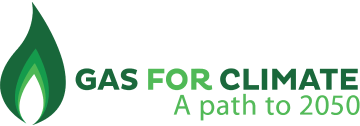

Renewable gas can be massively scaled up by 2050. Biomethane should be allocated based on the highest societal value. Hydrogen will be used in hard-to-decarbonise sectors – in industry as feedstock and for high-temperature heating, in the building sector, in power system balancing on long-time scales (e.g. hydrogen peaking plants), and in mobility applications, either as hydrogen or hydrogen-based synthetic fuel (aviation, maritime, heavy-trucking). Hydrogen is a prime candidate to facilitate sector coupling and fits well into the efforts for increased electrification by providing long-term storage and possibly also dispatchable power generation.
A substantial part of the current gas imports from Russia (155 bcm in 2021) can be replaced by domestic biomethane production (35 bcm) and renewable hydrogen production and import (50 bcm) by 2030. At the European level, supply potential is sufficient to meet the demand for renewable gases at all time scales (2030, 2040, and 2050), subject to acceleration of Renewable Energy Sources (RES) build-out beyond current targets. Individual regions might experience an abundance or lack of sufficient renewable energy and accelerated development of the European Hydrogen Backbone will help reconcile these differences can help to reconcile these differences.
Gas for Climate fully supports the Fit for 55 package, aimed at a 55% reduction in European emissions by 2030 and the accelerated goals under REPowerEU. Gas for Climate also promotes a target 35 bcm of biomethane and 20 Mt of hydrogen in the European Union by 2030. Scaling up of renewable hydrogen (deployment of electrolysis) and biomethane (driven in large by sequential cropping) production is possible. Renewable gases are the solution in removing barriers to decarbonisation and creating the conditions for a more cost-effective transition. Policymakers are to adapt the European Union’s regulatory framework so that the production of renewable and low-carbon gases is incentivised, and gas infrastructure can fully unleash its great potential in a future integrated energy system.